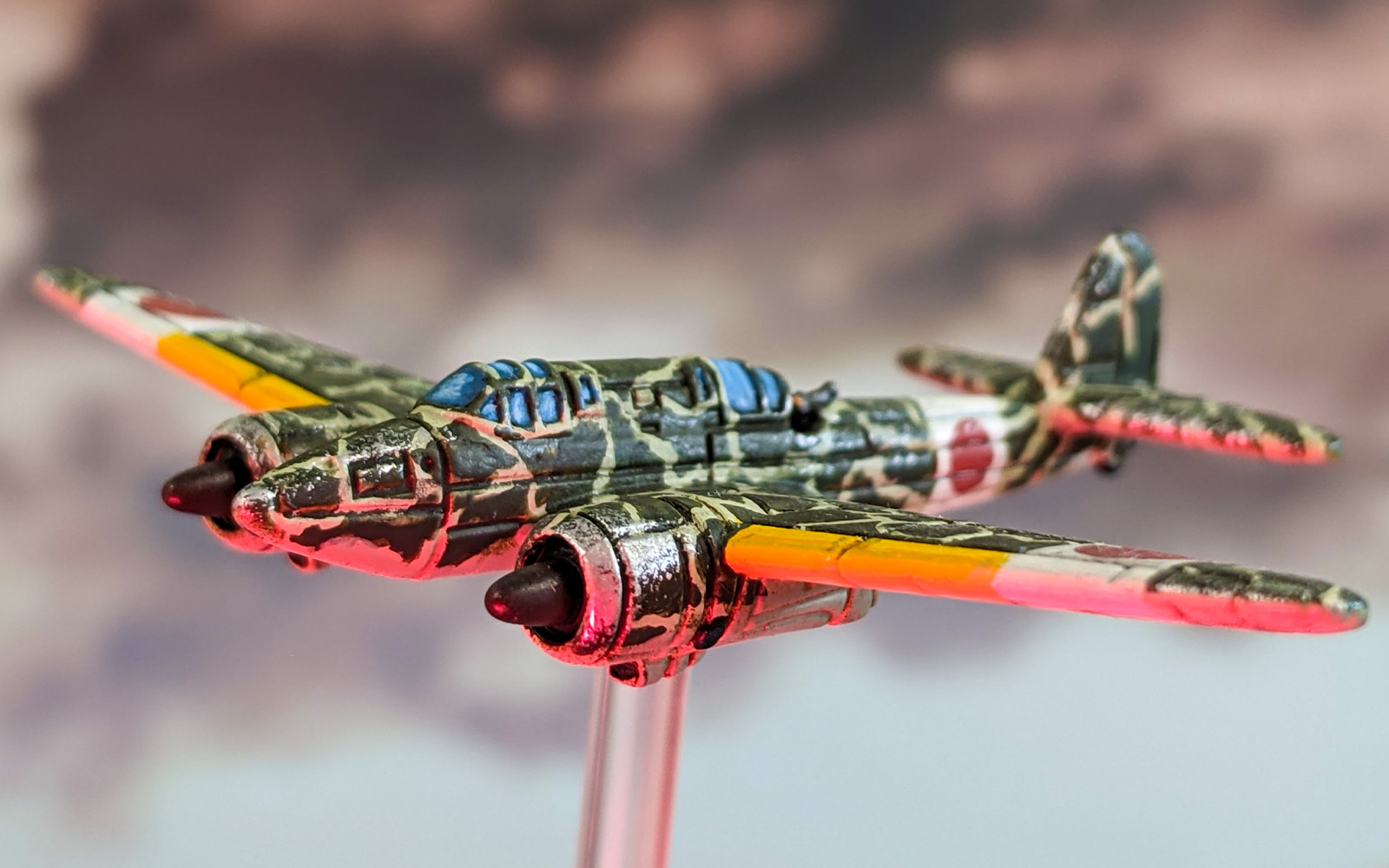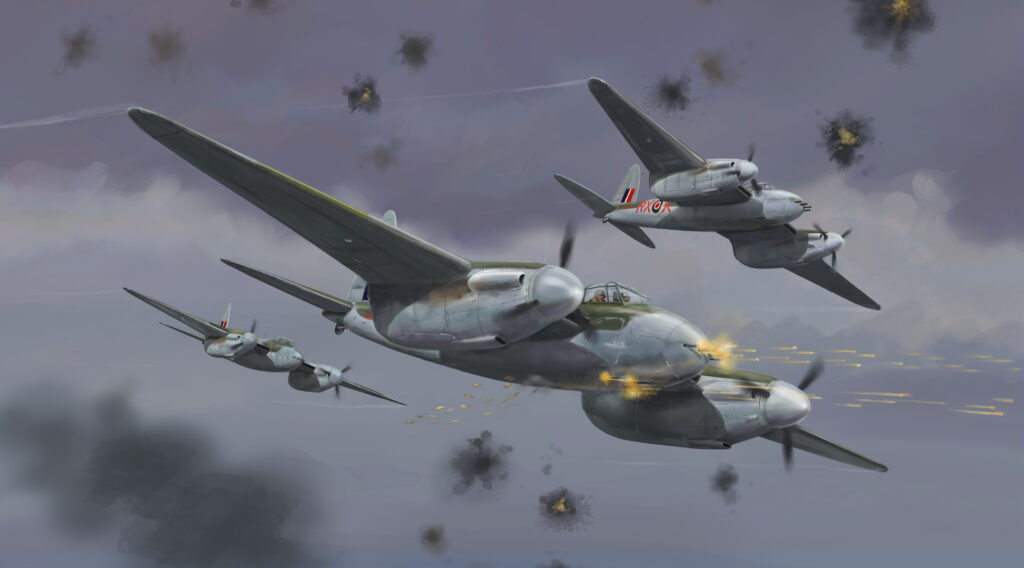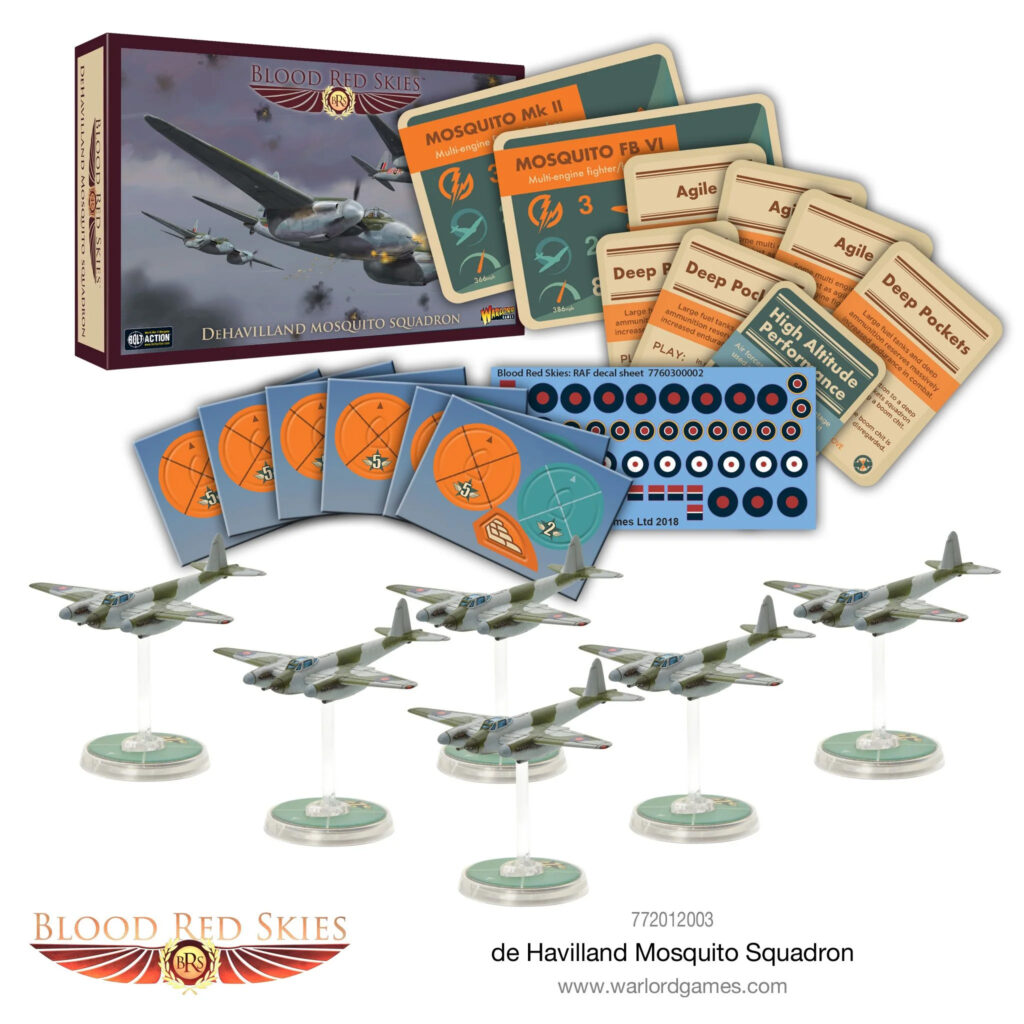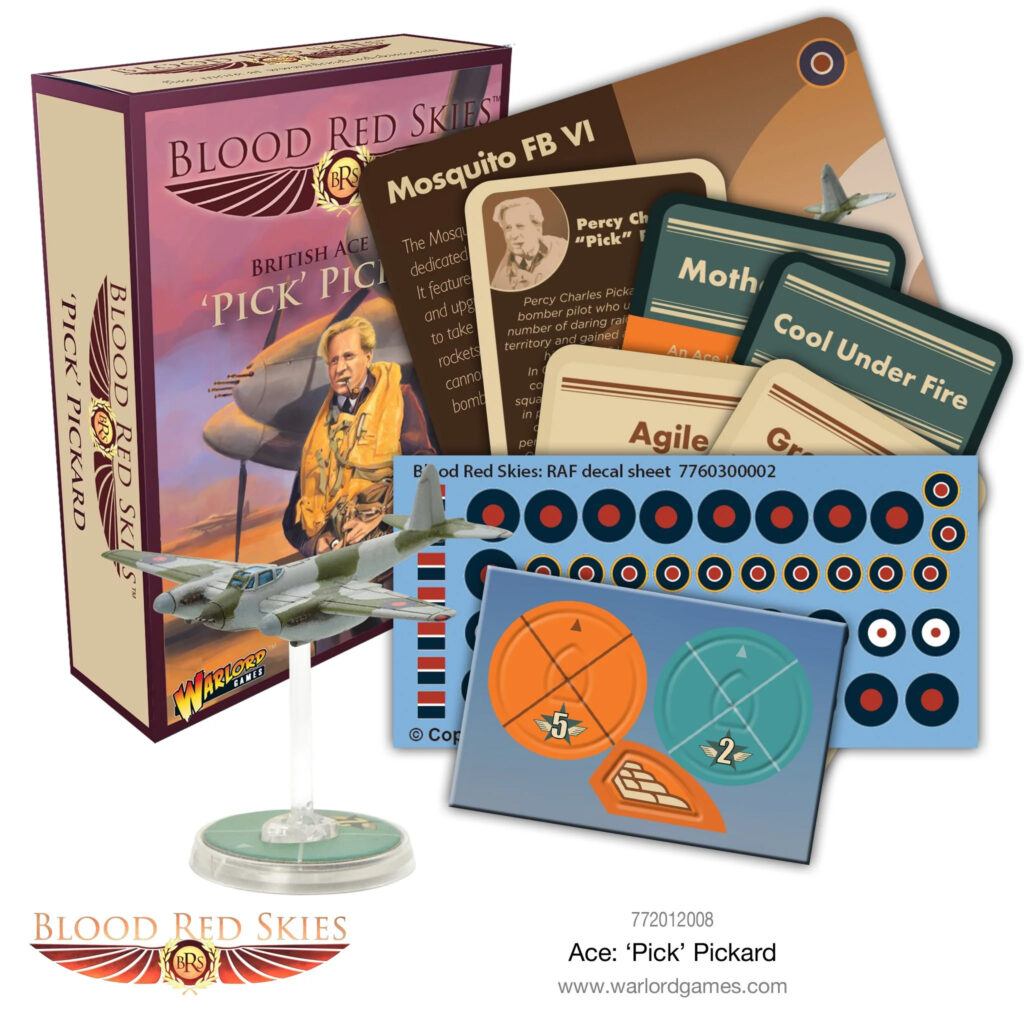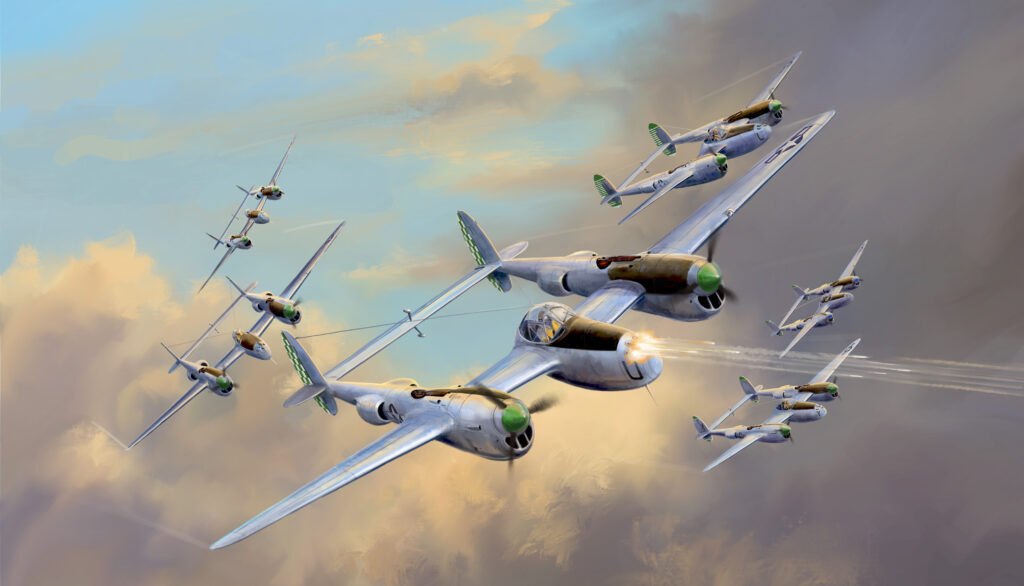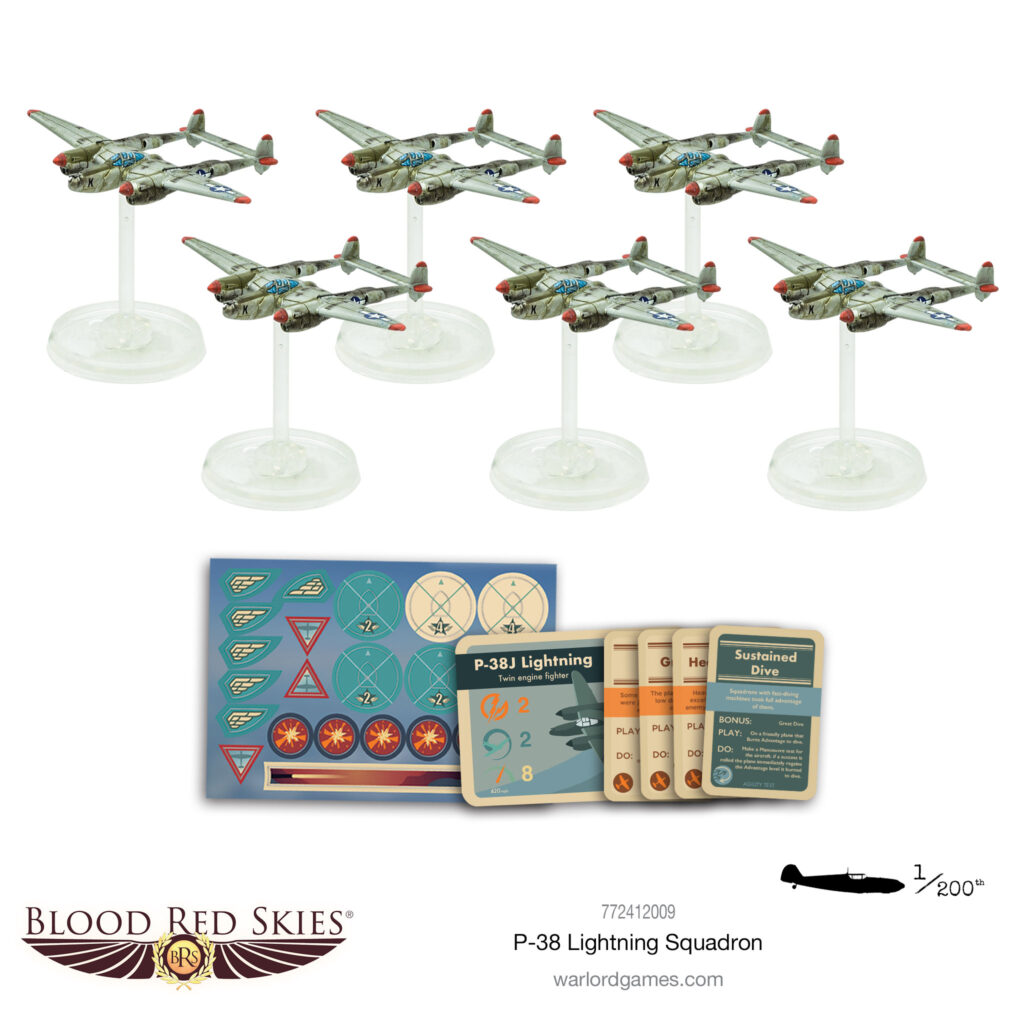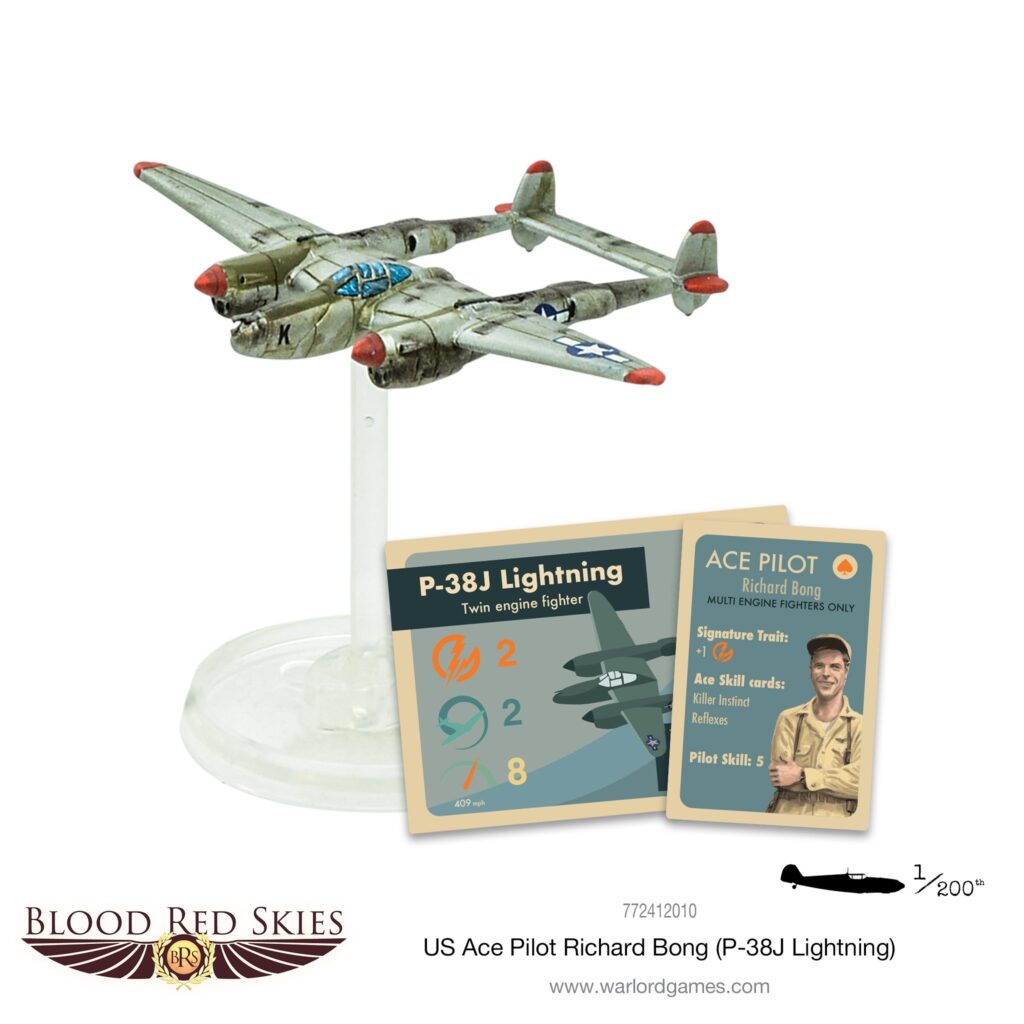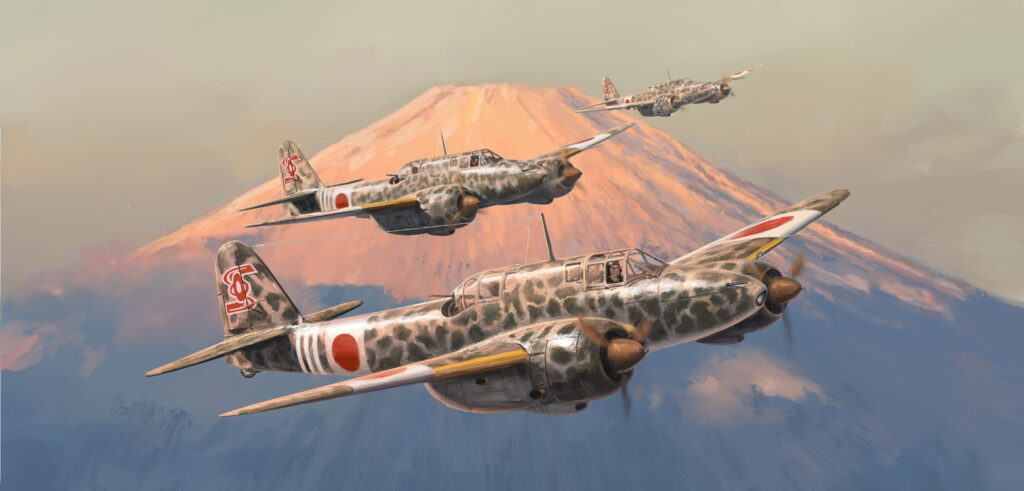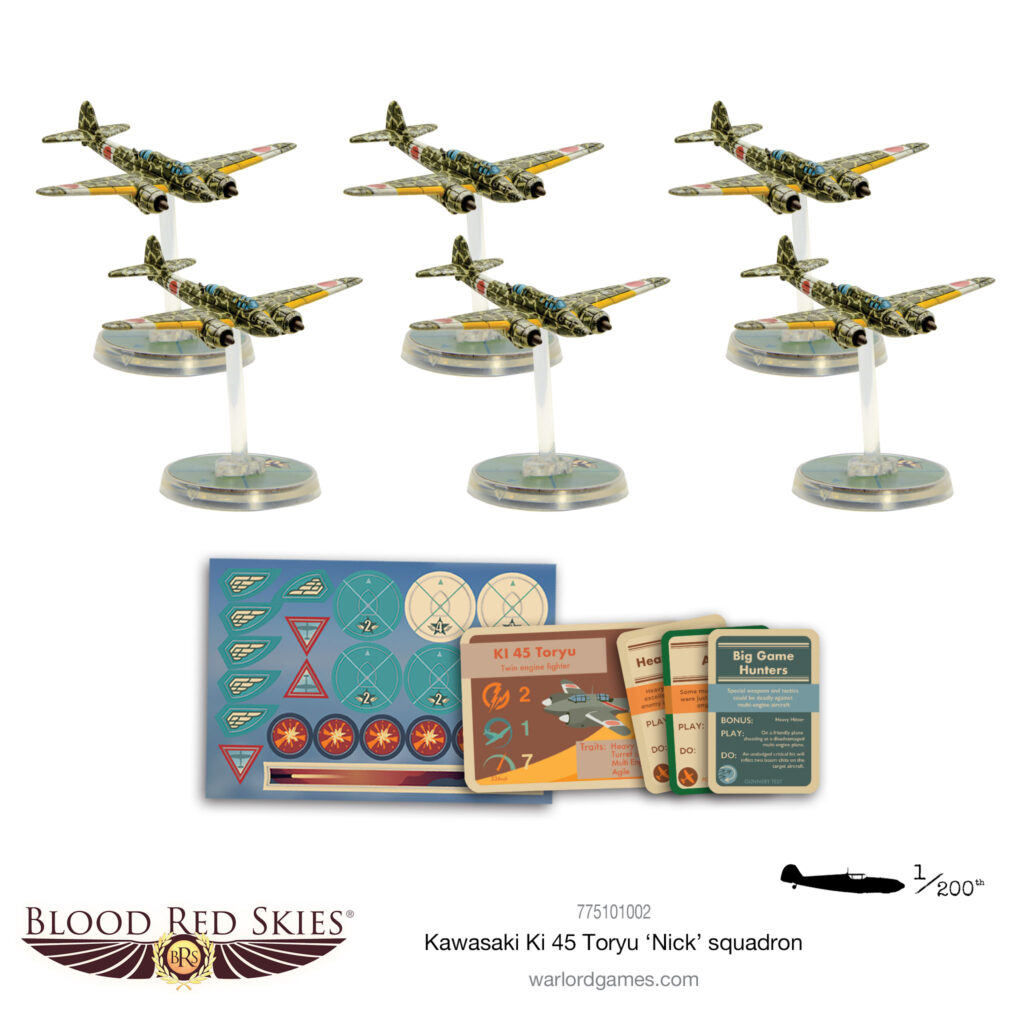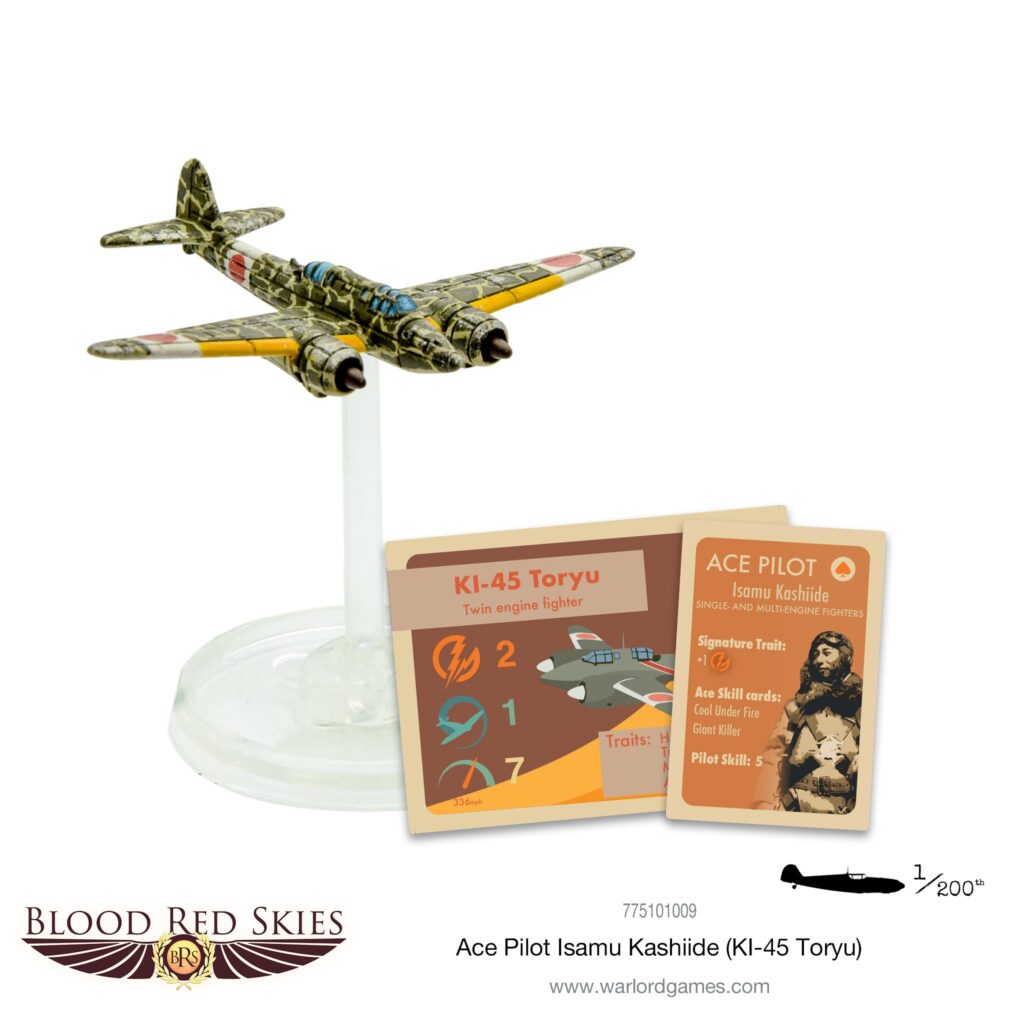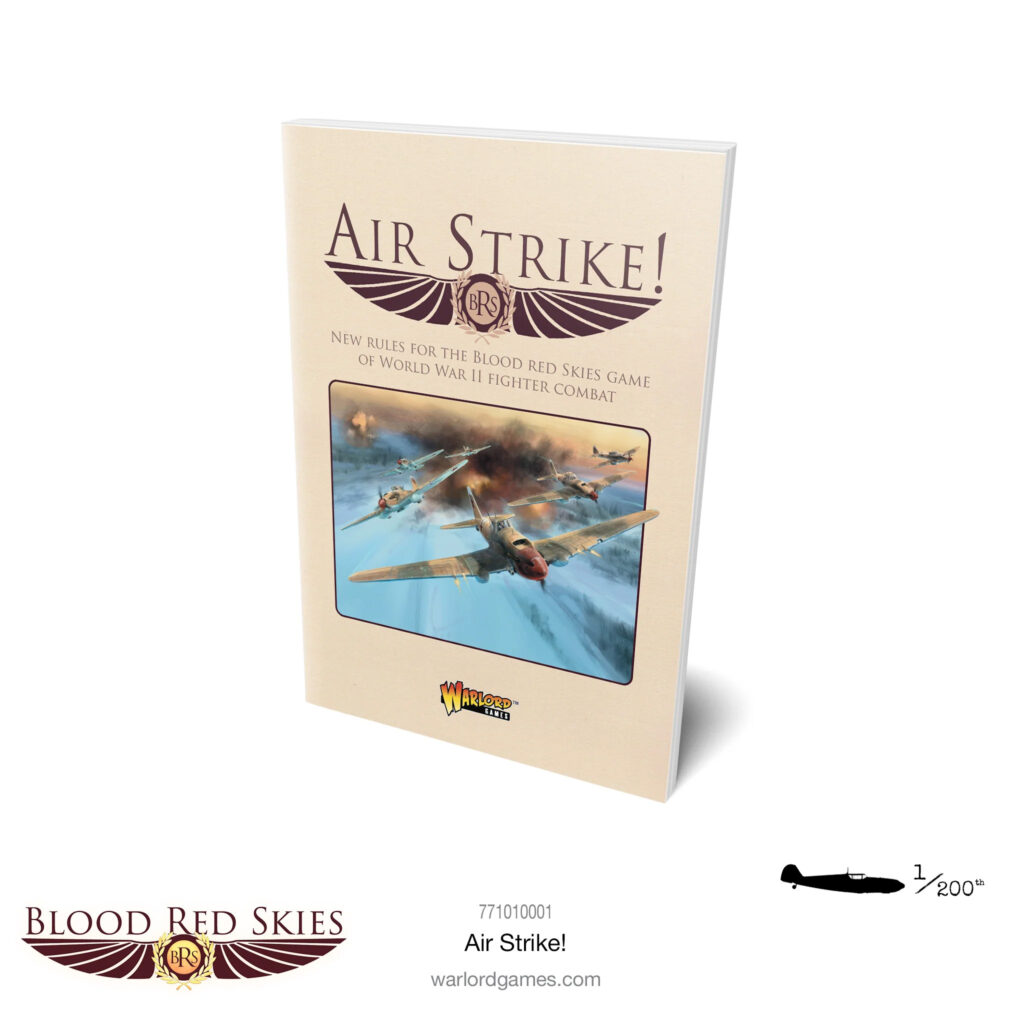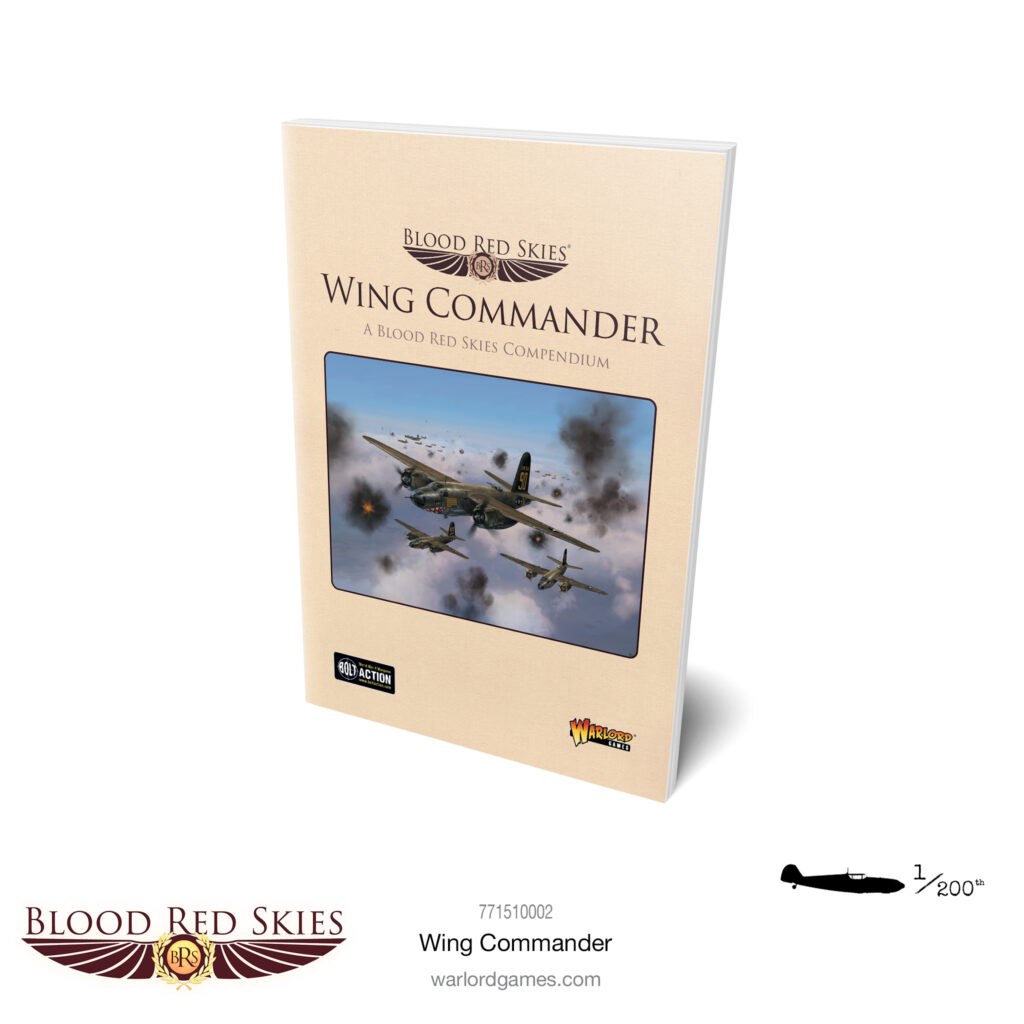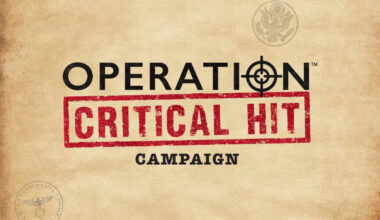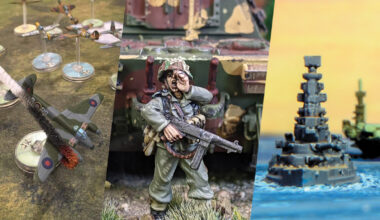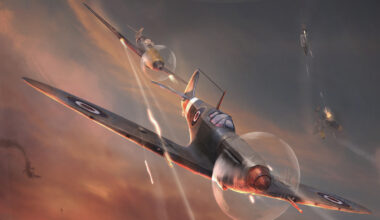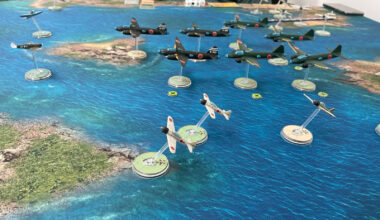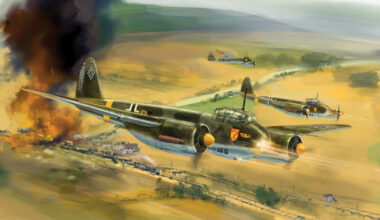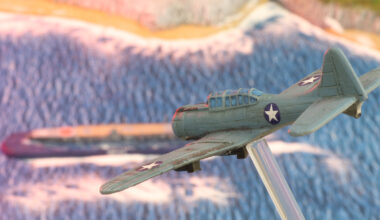This is a guest article by Rose Napier, a prolific member of the Blood Red Skies online community. If you’d like to write a feature for the Warlord Community site, don’t hesitate to get in touch via articles@warlordgames.com.
Sunlight glints off the polished canopy of a Toryu as it zips in for intercept. Fire streaks out from underneath a Mosquito’s wings, signalling the imminent bombardment of ground units. A Japanese pilot’s fearful expression is reflected in the waxed silver sheen of an attacking P-38. Aircraft enthusiasts could only envisage such emotive scenes because of these iconic multi-engined aircraft. But how can a prospective Blood Red Skies wing commander really put these agile fighters to work? I’ve endeavoured to put together a brief guide detailing twin-engined fighters in the Pacific theatre, and their distinct advantages and drawbacks.
de Havilland Mosquito
Let’s start closest to home for the UK-based Warlord folks; the Mosquito. Though the Mosquito did not see much service in the Pacific as a fighter bomber, the PR Mk.34 variant acted as an advanced photo-reconnaissance aircraft for the last year of the war. The RAF set a record for the furthest distance travelled during a reconnaissance mission by a twin-engined aircraft, making it a perfect choice for the Intruder Flight scenario included on page 49 of Air Strike!. In this capacity, using both the Recce aircraft rules included with the scenario as well as the Stripped Down equipment card makes the Mosquito FB Mk.IV an incredibly fast (Speed 10!) aircraft with which to shoot across the board. Sadly, no doctrine cards really help to exemplify the aircraft’s speed; though the High Altitude Performance card can help the Mosquito keep its edge as it comes across the board!
P-38J Lightning
Next, an aircraft that is near and dear to my heart. The P-38J was the definitive USAAF twin-engined fighter of the entire war, and was even the aircraft that manifested America’s “Ace of Aces” Richard “Dick” Ira Bong. In Blood Red Skies, it is an incredibly powerful aircraft to handle; and clocking in at 59 points, it had better be. A 2/2/8 multi-engine with Great Dive and Heavy Hitter means that you’ll be practicing the typical American strategy of boom and zoom tactics; flying fast, flying far, and hitting incredibly hard while you’re at it. With this in mind, a great doctrine card for a P-38 list is Low Altitude Performance, allowing any aircraft that gets caught unawares to make a quick and easy getaway at the cost of two Great Dive cards. Being able to immediately jump an aircraft up to neutral, for them to then burn advantage and dive a whopping 16 inches, allows you to keep the fight on your terms. Thematically, I would run P-38Js with the Polished Performance equipment card; after all, a shiny P-38 is a happy P-38!
While not typically allowed in tournaments, Dick Bong himself and his P-38J ‘Marge’ make an incredible addition to any P-38 squadron, with him being allowed both the Killer Instinct and Reflexes ace cards. He focuses heavily on setting up close-ranged head-on attacks, usually the deadliest shooting actions on the board.
Kawasaki Ki-45 Toryu ‘Nick’
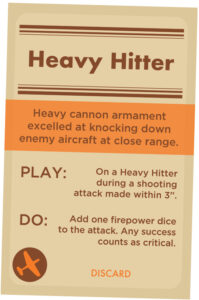
And lastly, a great opponent for the P-38J is, of course, the Ki-45 Toryu. Known by the USAAF as the ‘Nick’, the Ki-45 is a Japanese heavy fighter which carries the distinction of being one of the few Agile multi-engined planes to have turret firepower. Though its stats are lacklustre (2/1/7) and its price is high at 47 points, it is a great mid-war choice for any aspiring IJA squadron leader. Heavy Hitter means that this aircraft excels at bringing down enemy planes, and the rear turret’s firepower forces enemies to think twice before engaging from a tailing position. The Ki-45 is all about manoeuvrability in combat; though its agility is low, you should focus on keeping aircraft out of tailing range (or, of course, in range of a wingman) and in the thick of the fight. Good doctrine cards that fit both thematically for the Japanese pilots as well as the skills of the Ki-45 are Bait and Switch, to counter enemy tailing attempts; Big Game Hunters, to put down those pesky P-38s; and Blood Brothers, allowing your pilots to take sweet revenge even in their rear arcs!
And there we have it. If you haven’t flown an Agile multi-engined aircraft yet, I highly recommend it; they do have disadvantages compared to single-engined fighters, but they compensate with their constitution and endurance in a fight. They can prove to be a seriously valuable asset, especially if you like to dogfight with knives all the way out!
-Rose
Essential Resources
For the full rules on fielding multi-engined aircraft, look no further than the Blood Red Skies rules compendium Air Strike! This book presents all of the basic rules and adds many new ones suitable for expanded air operations including ground and sea targets, bombing, strafing and torpedo attacks, defensive flak and terrain. Jet aircraft are introduced via MiG Alley! and there is additional guidance for historic and competitive play.
Also Available is Wing Commander, a compendium of community-created scenarios, rules and campaigns curated by Blood Red Skies’ designer, Andy Chambers, which provides a plethora of new and exciting ways to play our favourite aerial dogfighting game.
